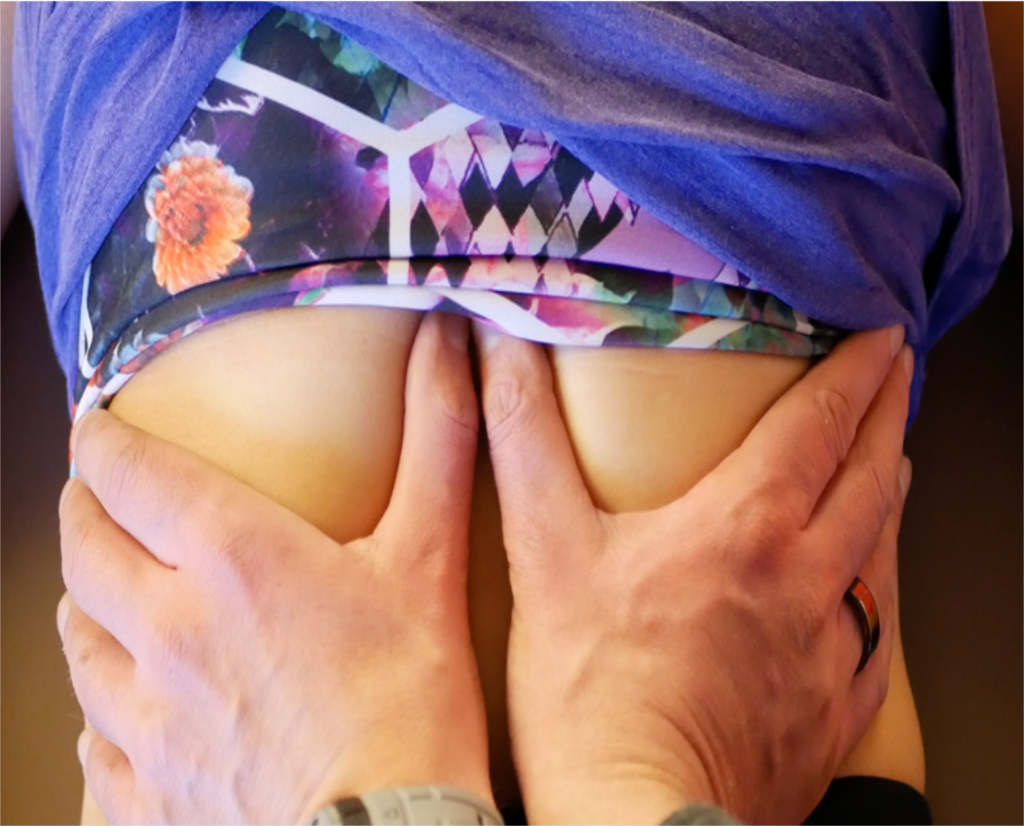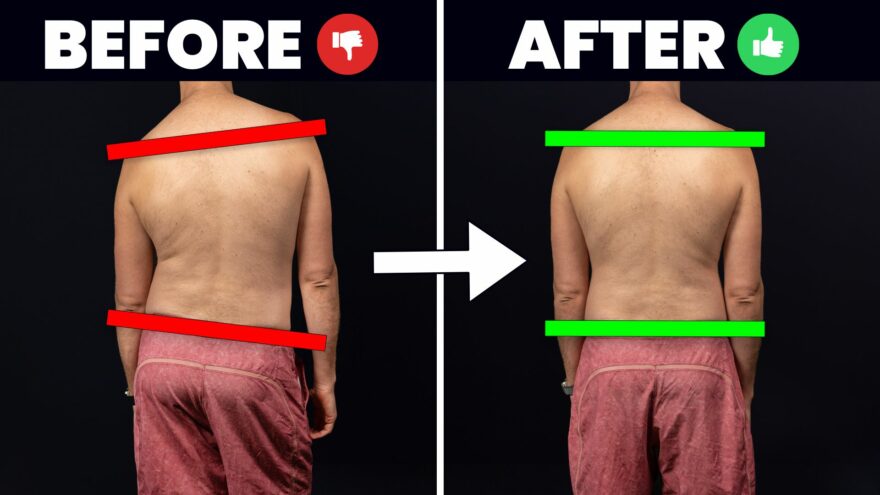Table of Contents
Unlocking Symmetrical Posture
Feeling twisted or off-kilter, but nothing is working?
Then you are falling victim to misunderstood solutions to posture and muscle imbalances. There’s much more nuance than you’d think.
But you can boil every imbalance down to 4 possibilities. I’ll show you how to do that (and how to fix it) below.
The Truth About Asymmetry
Did you know we’re all lopsided? It’s true.
These studies (1, 2, 3, 4, 5) show that we have a natural rightward spinal rotation. So if you’re feeling a bit uneven, you’re actually quite normal. Much like we aren’t evenly right and left handed, so too with our movement.
Now, if you are feeling pain or discomfort, then asymmetry becomes more relevant.
But I’m going to bust a common myth: That we ALL have the SAME asymmetrical pattern.
Here’s why it’s false.
Why One Size Doesn’t Fit All
Do NFL lineman and ballet dancers move the same? Of course not. They have different body types. Because of that, they move differently from one another.

Guess what? This is true for everyone. We all have different body types. So we won’t always have the same asymmetrical pattern. That’s the reason many muscle imbalance exercises fail. You must consider your body type if you want to improve your mobility.
Here’s how we can measure it.
Measuring Your Body Type
An easy way to determine your body shape is by measuring the infrasternal angle (ISA). This basically tells us our 360º torso shape.
ISA shape falls along a continuum. You are more narrow or more wide.


Here’s how to measure it:
- Lie on your back with knees bent
- Put your fingers underneath the inner aspect of your ribs
- Follow your rib movement as you breathe–silent through the nose, soft through the mouth
- Note how the ribs move
If your ribs move more side to side, you are a narrow ISA.
If your ribs move more up and down, you are a wide ISA.
Tailored Infrasternal Angle Exercises
Each ISA has a common asymmetrical pattern. I’ll outline each below.
Do each exercise for 5 sets x 5 breaths.
If you don’t fit either of these patterns, don’t worry. I’ll explain what’s going on later.
Narrow Infrasternal Angle
Narrows present with the following asymmetries:
- Limited left hip external rotation (<60º)
- Limited right hip internal rotation (<40º)
- Limited left straight leg raise compared to right
- Limited right hip flexion compared to left
If that’s you, I’d try these 3 exercises in order:
1. Left Side Lying Right Knee Push
- Have both hips flexed to 60º
- Press into the wall with both feet. Focus on inner heel and ball of the foot by the big toe.
- Breathe in through your nose, out through your mouth.
- On each exhale, gently oush your right knee forward. DO NOT lose the foot points.
2. Quadruped on Elbows Hip Shift
- Keep hips and shoulders at a 90º angle.
- Start sagged
- Breathe in through the nose
- Exhale and push your torso up through 3 points: wiggle bone in the wrist, elbow, and knees.
- Push should be a 3-4/10 effort
- On each subsequent exhale, press right kneecap into the ground. This will cause the left knee to come up off the ground
3. Right Leg Hooklying
- Lie on your back with knees bent
- Feel weight through your PSIS (bones at the top of the pelvis) and upper back
- Press inner heel and ball of big toe into the ground WITHOUT losing PSIS contact.
- Lift left leg off the ground
Wide Infrasternal Angle
Wide ISAs present with the following asymmetries:
- Limited left hip internal rotation (<40º)
- Limited right hip external rotation (<60º)
- Limited right straight leg raise compared to left
- Limited left hip flexion compared to right
If that’s you, then do these moves in order:
1. Right Low Oblique Sit
- Lie on your right side, weight on your pisiform and outer knee.
- Breathe in through the nose
- Exhale and push your torso up through those two points
2. Hooklying Hip Shift
- Lie on your back with knees bent
- Feel weight through your PSIS (bones at the top of the pelvis) and upper back
- Press inner heel and ball of big toe into the ground WITHOUT losing PSIS contact.
- On each exhale, push your right knee forward WITHOUT losing the foot points on either side
3. Left Side Lying Right Wall Push
- Top leg at a 90º angle.
- Bottom leg at a 0º angle
- Push into wall with TOP inner heel and ball of big toe
- Hold and breathe
If You Don’t Match These patterns
Do you not quite match the typical narrow and wide ISA descriptions? Don’t worry, I got you!
Oftentimes, these “flips” occur because of increased tension in the bigger muscle groups. Often, these folks are more restricted compared to the above patterns.
But these 3 movements should help with that:
1. Foam Roller Breathing
- Lie on your back and place a foam roller under the middle third of your rib cage. If it’s uncomfortable, cushion it with a pad.
- Roll your top arm and leg forward, aligning your torso with your legs.
- Take silent breaths in through your nose.
- Softly exhale through the mouth
- Allow your body to melt down into the foam roller.
- Perform four sets of five breaths per side, twice a day.
2. Pelvic Foam Roller Breathing
- Place the foam roller at the top part of your pelvis.
- Roll your torso and hips forward.
- Breathe in through the nose
- Exhale through the mouth. Melt down into the foam roller.
- Shift back and forth on the foam roller
- Perform four sets of five breaths per side, twice a day.
3. Exercise Ball Weight Shifts
- Lie on your back with an exercise ball between your shins and hands.
- Have even weight distribution between the PSIS and the upper back.
- Apply gentle pressure on the ball. 3-4/10 effort
- Exhale and shift your weight from one side to the other.
- Inhale and hold the shifted position.
- Aim for two to three sets of five to eight shifts per side, twice per day.
Sum Up
Using these movements ought to make MASSIVE changes to your mobility.
If you’d like more movements that address these differences, you’ll love this post.
